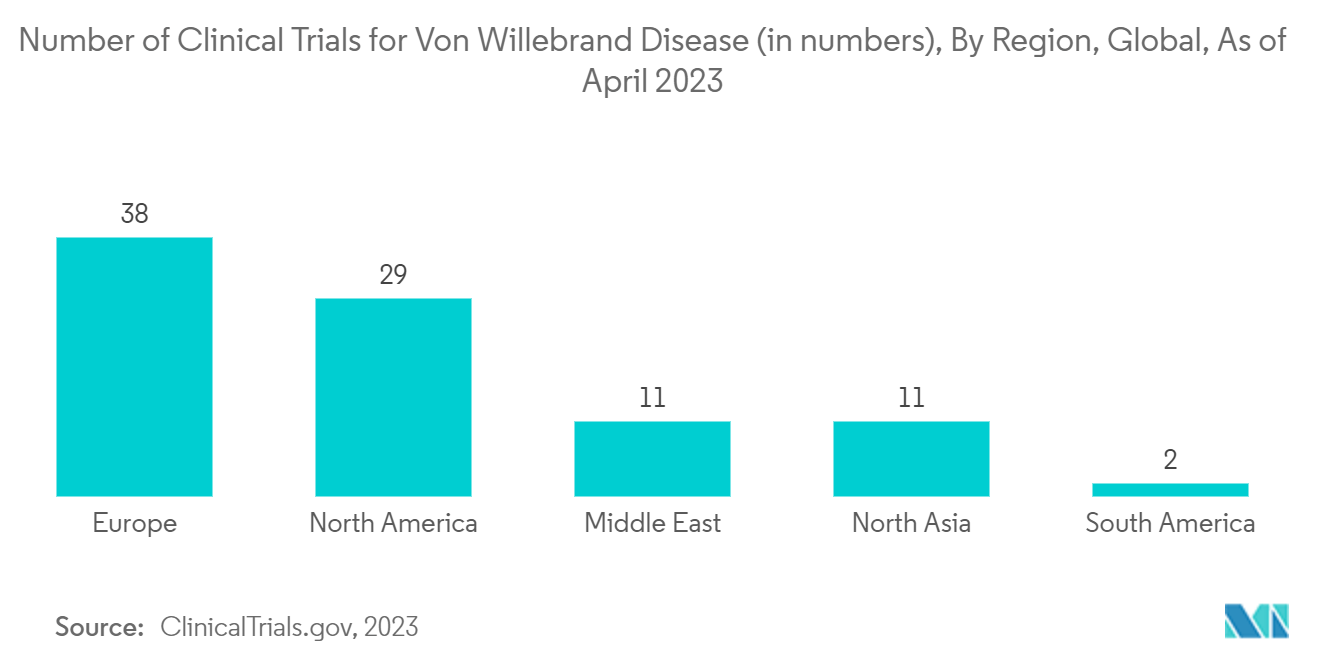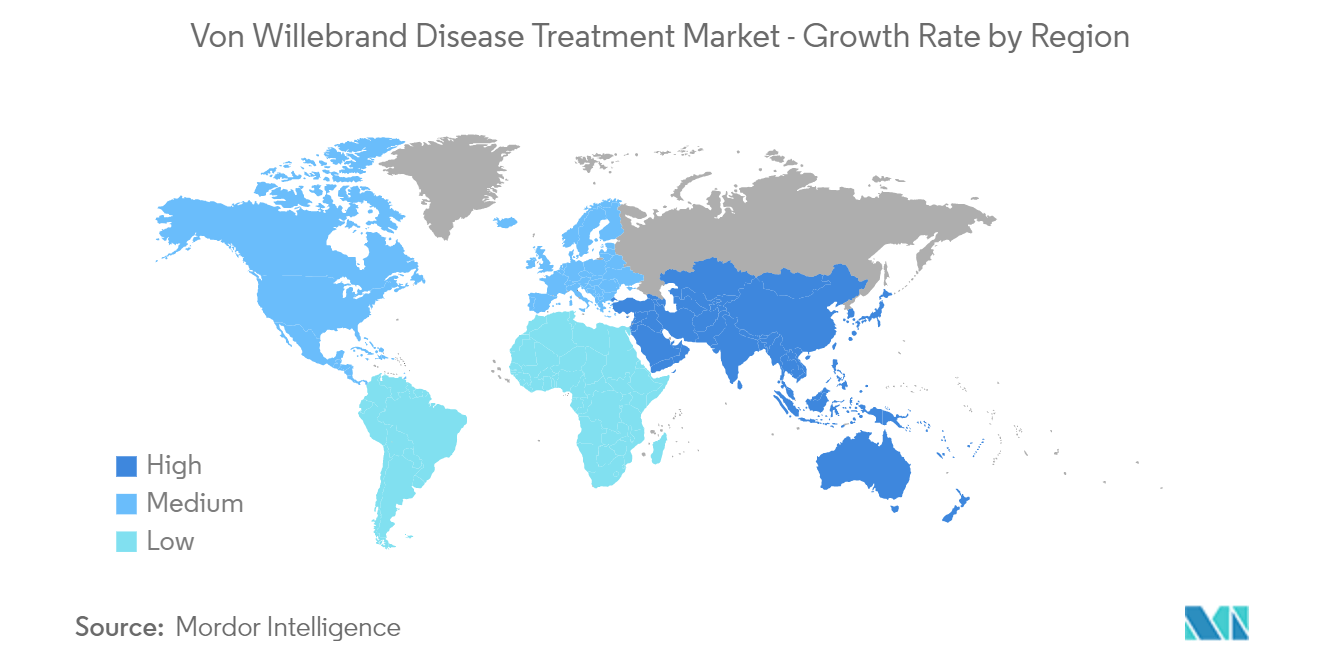Market Trends of Von Willebrand Disease Treatment Industry
Replacement Therapy Segment Expected to Register Significant Growth
The replacement therapy segment is anticipated to witness significant growth. Replacement therapy is referred to as the therapy involving the supply of a substance (such as a hormone or nutrient) lacking in or lost from the body. The replacement therapy segment is growing and is expected to grow over the analysis period.
Analysis of several studies and articles shows that treatment of VWD is primarily done with replacement therapy such as vWF and factor VIII plasma concentrates and recombinant vWF, which shows effective results among the patients. Hence, research is ongoing to evaluate the safety and efficacy of replacement therapies for VWD.
For instance, as per a research study published in the Blood Transfusion Journal in April 2022, a clinical trial program was conducted with a replacement therapy in pediatric patients treated with Wilfactin for up to 4.2 years, in 90.3% of episodes, good hemostatic efficacy was achieved and provided a safe and effective treatment in patients <6 years of age with severe VWD. Thus, such research with positive results creates demand for the availability of replacement therapies in the market and is expected to boost the segment's growth.
The increasing number of product approvals is one of the major factors fueling the segment's growth over the forecast period. Several market players are engaged in obtaining approvals for replacement therapies for the treatment of VWD. For instance, in June 2021, Takeda Pharmaceutical Company Limited reported that the USFDA accepted the supplemental Biologics License Application (sBLA) for VONVENDI, the first replacement therapy for prophylactic use in adults with VWD in the United States. This is meant for prophylactic treatment to prevent or reduce the frequency of bleeding episodes in adults (aged 18 years and older) with VWD. Thus, the segment is expected to grow significantly over the forecast period due to the factors mentioned above.

North America is Expected to Have a Major Market Share
North America holds a significant market share and is expected to continue the trend during the analysis period. The factors attributing to the high market share of North America are the consistent focus on cost-effective and innovative drugs and the increasing prevalence of the disease across the countries in the region.
The United States, among other countries, has shown a growing trend in the studied market. The major factors contributing to the market growth in the United States are the rising incidence of Von Willebrand disease, the growing number of strategic initiatives, and the growing number of patient assistance programs. For instance, as per the update by the CDC in April 2021, VWD is the most common bleeding disorder in the United States, and 3.2 million people in the country had the disease in recent years. In addition, as per the 2023 data update by the National Hemophilia Foundation, 1 in 100 people in the United States are found to have VWD every year. Therefore, this burden of the disease is creating a significant demand for the availability of innovative treatments for this disease in the country, contributing to the overall market growth in the region.
There are several initiatives to raise awareness, and product approvals of VWD are fueling market growth. For instance, in June 2021, the USFDA granted Breakthrough Therapy designation to efanesoctocog alfa (BIVV001) for the treatment of people with hemophilia A. Efanesoctocog alfa is a novel and investigational recombinant factor VIII therapy that is designed to extend protection from bleeds with once-weekly prophylactic dosing for people with hemophilia A. It builds on the innovative Fc fusion technology by adding a region of von Willebrand factor and XTEN polypeptides to extend its time in circulation. Thus, the region is expected to grow significantly during the forecast period due to the factors mentioned above.


